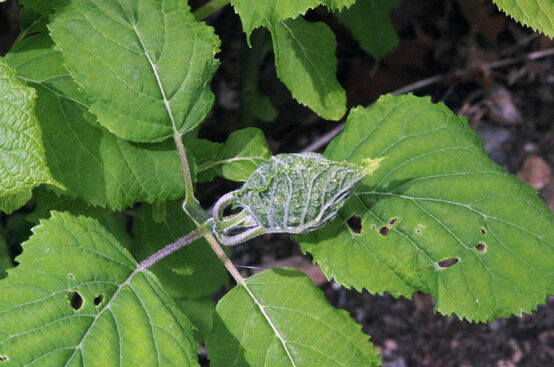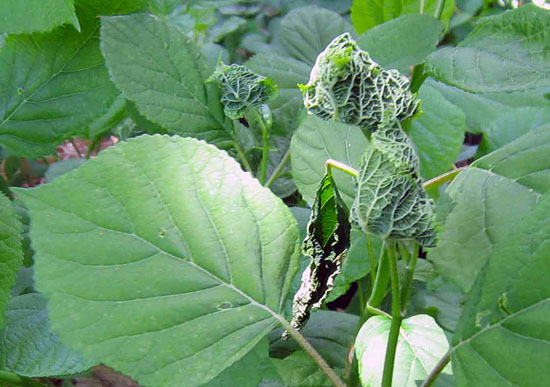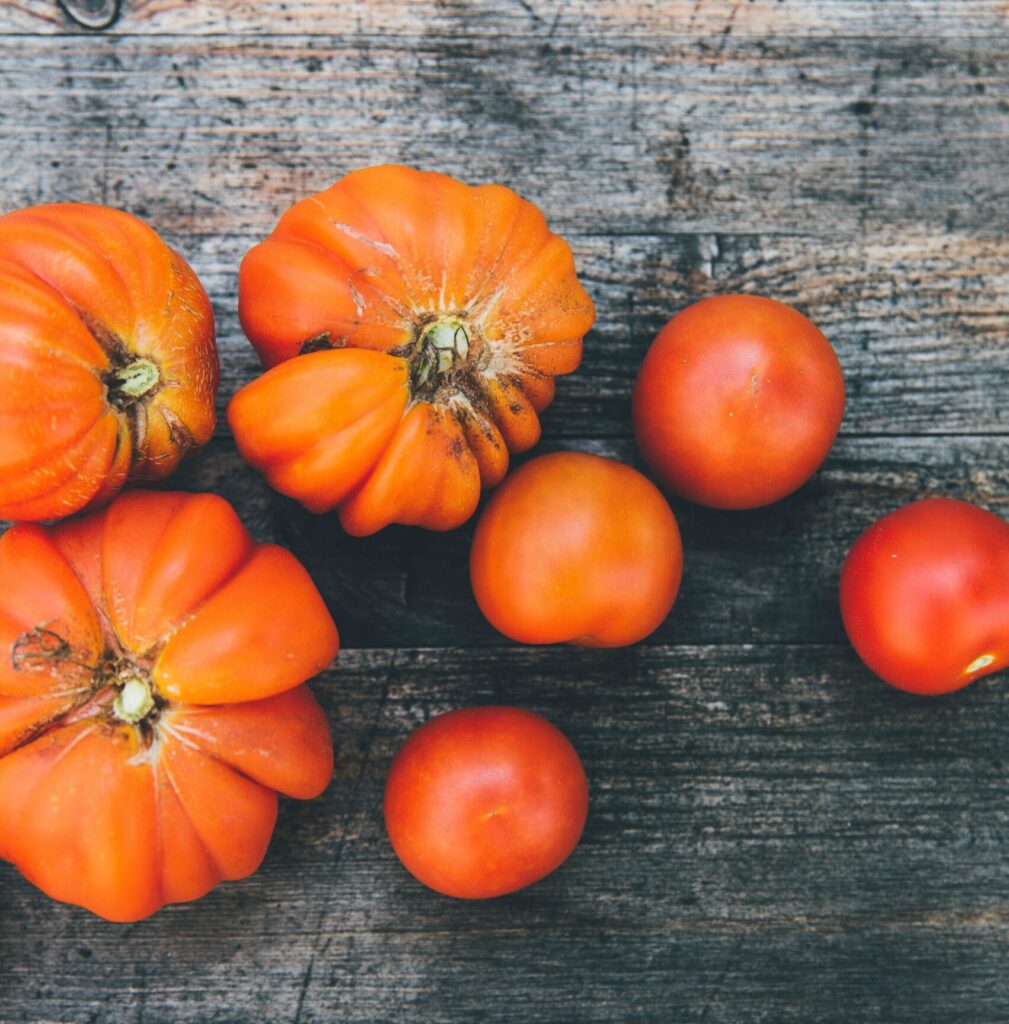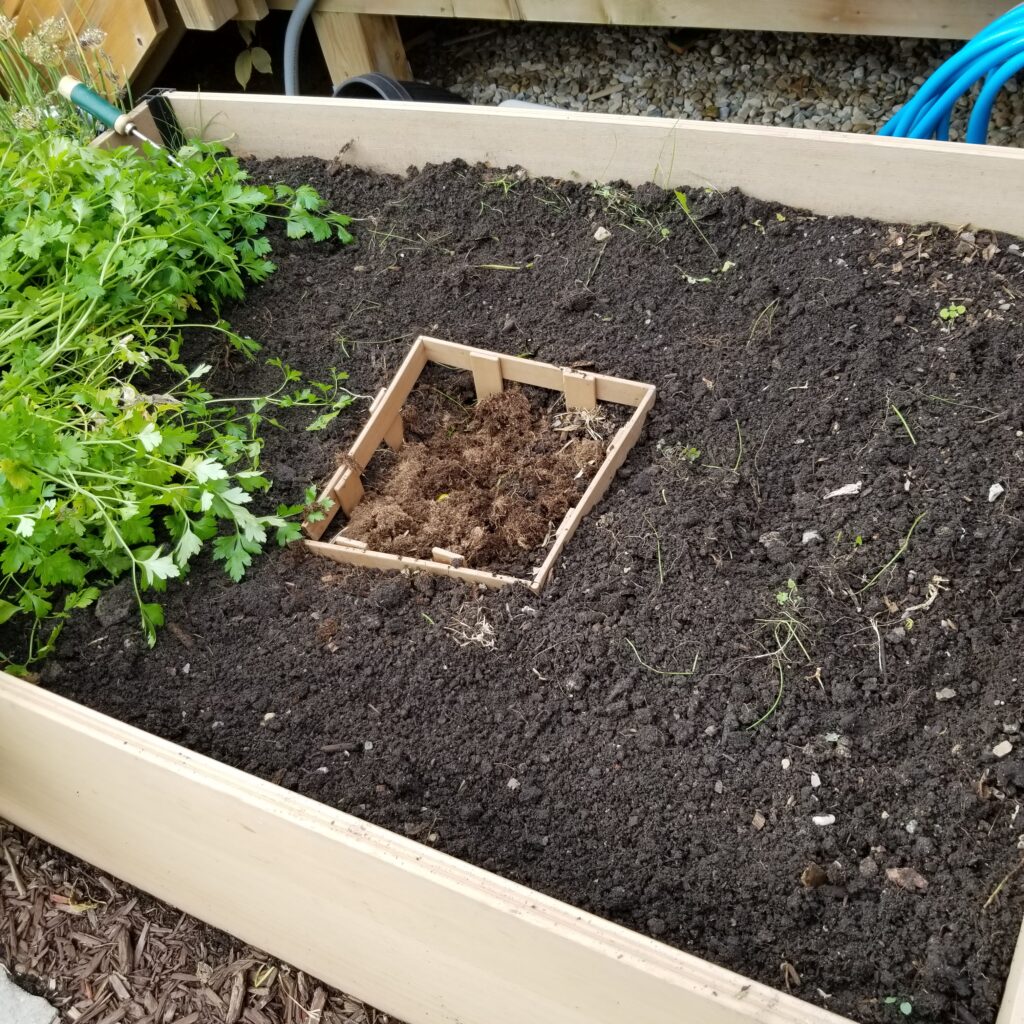
Do you struggle with hydrangea leaf curl? I do. Every spring my hardy and beautiful Annabelle hydrangeas (arborescens ‘Annabelle’, aka mopheads) start growing well then suddenly dozens of leaves start curling up. What’s that about!!?

How a beautiful Annabelle Hydrangea should look

How a Hydrangea looks with leaftier damage. Photo -University of Illinois
The Cause of Hydrangea Leaf Curl – The Leaftier
The hydrangea leaftier larva (caterpillar) binds two or as many as four leaves together with strands of silk into a cup form and then feeds on the flower bud within. The hydrangea leaftier, “Olethreutes ferriferana, is a species of tortricid moth in the family Tortricidae.” Wikipedia
Pulling the leaves apart will reveal a slender greenish caterpillar up to one-half inch long with a blackish head. The larvae eat the bud and leaves. In early July they will stop feeding, drop to the ground to pupate over the summer and emerge as adult moths next spring, ready to lay more eggs.

Obvious webbing and frass. Look carefully to see the green caterpillar. Photo Credit Bug Guide.net
Still not sure if your hydrangea leaf curl is caused by Leaftier? More good images here Hydrangea Leaftier Oddball Damage – Ohio State University
Control methods
- In early spring, cut all stems to 10 cm from the ground and clean up well around the base. Your goal is to eliminate a home for the moth to lay eggs. You won’t stop them, but it will help.
- Once you notice leaf pockets forming, open each affected one carefully and remove the webbing and any leaves that are too damaged. Try to leave the center flower head …or
- Cut off the pods – yes you’ll lose some flowers! Dispose of the pods in a sealed waste bag.
- If tackling this late June, peel open the bound leaves to expose the small, green caterpillar and then viciously crush it or throw it in a bucket of soapy water. Or do it mercifully. Either way, Do it!
A different insect that causes similar damage is the leafroller. In this case, the caterpillar rolls or folds only one leaf, binds it with strands of silk, then feeds and rests within the rolled or folded leaf.

Example of damage by a leafroller. Photo Credit- Jess Foster
In both cases, the damage is unsightly but will not destroy the shrub. Because it occurs early in the spring, if you remove the infested leaves and destroy the caterpillars, the plant will have time to grow and flourish over the summer. Make sure to clean up the ground below the shrubs very well.
Reference: University of Illinois Extension
Hydrangeas, in general, are some of my favourite shrubs – hardy, with long lasting flowers and mostly trouble-free. There are so many beautiful new varieties (I have 7 just in my own urban garden) and they’re well worth growing.
If you have other questions about your hydrangeas, contact us and one of our terrific master gardener volunteers will answer!





About The Author: Armstrong
As an author and editor, Linda directs her lifelong love of nature and plants to concerns about our environment and how we can do better. In addition to decades of gardening experience, and training as a master gardener, Linda focuses on learning from leading science-based educators and writers, and in the process finds that she uncovers many gardening myths.
More posts by Armstrong